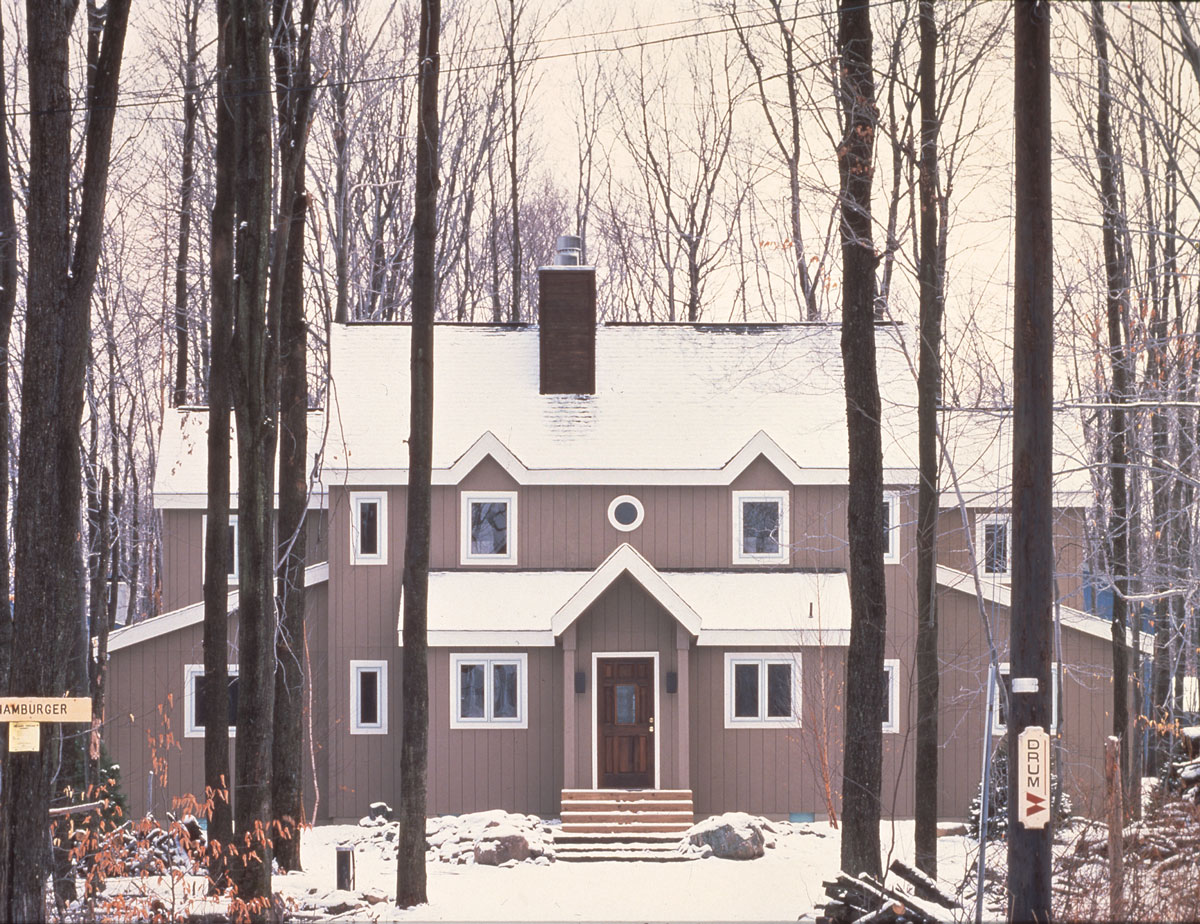ARCHITECTURE:Aldo Rossi-The Architect and the Cities, Part II
 Aldo Rossi advocated the use of a limited range of building types and concern for the context in which a building is constructed. This postmodern approach, known as neorationalism, represents a reinvigoration of austere classicism. In addition to his built work, he is known for his writings, numerous drawings and paintings, and designs for furniture and other objects.
Aldo Rossi advocated the use of a limited range of building types and concern for the context in which a building is constructed. This postmodern approach, known as neorationalism, represents a reinvigoration of austere classicism. In addition to his built work, he is known for his writings, numerous drawings and paintings, and designs for furniture and other objects.
By Dimitris Lempesis
Photo: MAXXI Archive
A desire of expressing the greatness of his gaze, the complexity of his thoughts and research and the variety of Rossi’s work is what breathes life into an exhibition entitled “Aldo Rossi. The Architect and the Cities” which is extremely rich in materials, with over 800 pieces including documents, correspondence, models, sketches, drawings and photographs coming mainly from the archives of Aldo Rossi preserved in the MAXXI Architettura Collection and by the Aldo Rossi Foundation, as well as important loans. In addition to Rossi’s own works, the exhibition boasts photographic images coming from the many important photographers who have measured themselves against his work and have thus enriched the meaning of each work of architecture with their own personal touch. In addition to the photos by Luigi Ghirri, the exhibition also features those by other important photographers of the likes of Gabriele Basilico, Giovanni Chiaramonte, Ugo Mulas, Mario Carrieri, Stefano Topuntoli, Antonio Martinelli, Marco Introini. “Aldo Rossi. The Architect and the Cities” is divided into two large sections, one narrating his projects in Italy, the other those around the world and three additional thematic; the first revisits his years of training in Milan, the others are dedicated to two of the most iconic projects carried out by Rossi: the Modena cemetery and the The Theatre of the World in Venice. The exhibition itinerary starts from the very first thematic area, in the middle of Gallery 2, which is dedicated to the early years of his professional training in a post-war Milan, which was still recovering from the bombings and was immortalised through the camera of Enrico Peressutti. There, in the newsroom of Casabella by Ernesto Nathan Rogers or at the Casa della Cultura directed by Rossana Rossanda, emerged both the ethical need of a young Aldo Rossi to contribute to an architectural culture able to face the challenges of rebuilding after the devastation, and the poetic language that will be his faithful companion throughout his life. In this section, the vast scale replica of the Duomo Cathedral in Milan that Rossi kept in his studio can also be found. At the two opposite ends of the Gallery are the thematic areas on the Modena Cemetery and that on The Theatre of the World. Rossi thought of the Modena cemetery, designed in 1971 with Gianni Braghieri and to this day still unfinished, as a city of the Dead, composed of straight arcaded paths featuring two archetypal architectural figures at both ends: a red cube and a cone. This city of the Dead, notwithstanding its being so essential and metaphysical, stands very powerful and evocative, just as in the famous photograph by Luigi Ghirri, where the red cube, a shrine of the Dead during war, emerges on a white blanket of snow and is exhibited here with other photos that Ghirri took at the cemetery for the Lotus International magazine, as well as Stefano Topuntoli’s aerial footage, that documented the rapport with the territory. The video-gallery is broadcasting the movie “Ornamento e delitto” written by Rossi with Gianni Braghieri and Franco Raggi for the XV Milan Triennale as well as interviews, speeches at conferences and documentaries. The Theatre of the World stands moored in one of the most visible places in the world. This as evocative, joyful and ephemeral theatre unlocked the doors to international fame for Rossi. Built for the first Architecture Biennale directed by Paolo Portoghesi in 1980, this small floating theatre was located in front of the Punta della Dogana. At the end of the Biennale, it sailed to Dubrovnik and, once back in Venice, it was dismantled. Its construction and incredible journeys are documented in the drawings and the scale model as well as by the photographs by Antonio Martinelli. Behind this thematic area, the Piroscafo bookcase, designed thirty years ago with Luca Meda and produced by Molteni&C, hosts the Quaderni Azzurri (blue notebooks), a sort of personal journal with thoughts, notes, memories and drawings that inspired the quotations of the whole itinerary of the exhibition. Also the Parigi chairs (1989) produced by UniFor are on display in this area. 40 models are on display laying the basis of the two main sections of the exhibition. These are dedicated to the projects carried out in Italy and in the world, fragments of a poetic yet realistic tale of the cities, where the specific colors and features of the buildings breathe life even into faceless contexts. These models interact with technical drawings, photographs, artistic drawings of different formats and made in ink, wax, pastel and watercolor. In the section dedicated to his projects in Italy, stands a large 2x2m drawing of the famous the Analogous City, a remarkable reflection on an imaginary city, suspended between memory and desire, represented through the combination of urban features, historical pieces of architecture and projects all by Rossi himself. The Analogous City also features an experimental application developed by Dario Rodighiero, which allows the viewer to select any element of the painting and provides relevant information and references for further information. Then come the projects for two of the most important Italian theatres, the Carlo Felice in Genoa and the Fenice in Venice, those for the Piazza di Fontivegge in Perugia as well as the “Gallaratese” in Milan, a long urban building which recalls the typical Lombard case a ballatoio, set within a larger housing development designed by his fraternal friend Carlo Aymonino, both intended as attempts to confer an urban dimension to the suburbs. Among his projects abroad, which started with the large panel of the relief of the city of Zurich, which Rossi created during the years spent teaching at the ETH in this Swiss city, a significant one is the Bonnefantenmuseum in Maastricht, which is located on the edge of the Meuse river and is the most important museum built by Rossi. The author of many museum projects and as many set-ups, he also designed the colourful complex of the Schützenstrasse in Berlin, a mischievous way of criticising the grey reconstruction of the German capital; the Disney Headquarters in Orlando, a colourful urban element in which the historical shape of Italian cities blend in with the verticality of their American counterparts.
Photo: Aldo Rossi, with G. Braghieri, Competition for the cemetery of San Cataldo-Modena, 1971-1983, “Study for the Modena Cemetery with main elements for the Modena exhibition”, June 1983, India ink, pencil, watercolors, markers on tissue paper pasted on cardboard, MAXXI Architecture Collection. Aldo Rossi Archive, © Eredi Aldo Rossi
Info: Curator: Alberto Ferlenga & Chiara Spangaro , MAXXI – National Museum of 21st Century Arts, Via Guido Reni 4/a, Rome, Duration: 10/3-17/10/2021, Days & Hours: Tue-Fri 11:00-19:00, www.maxxi.art

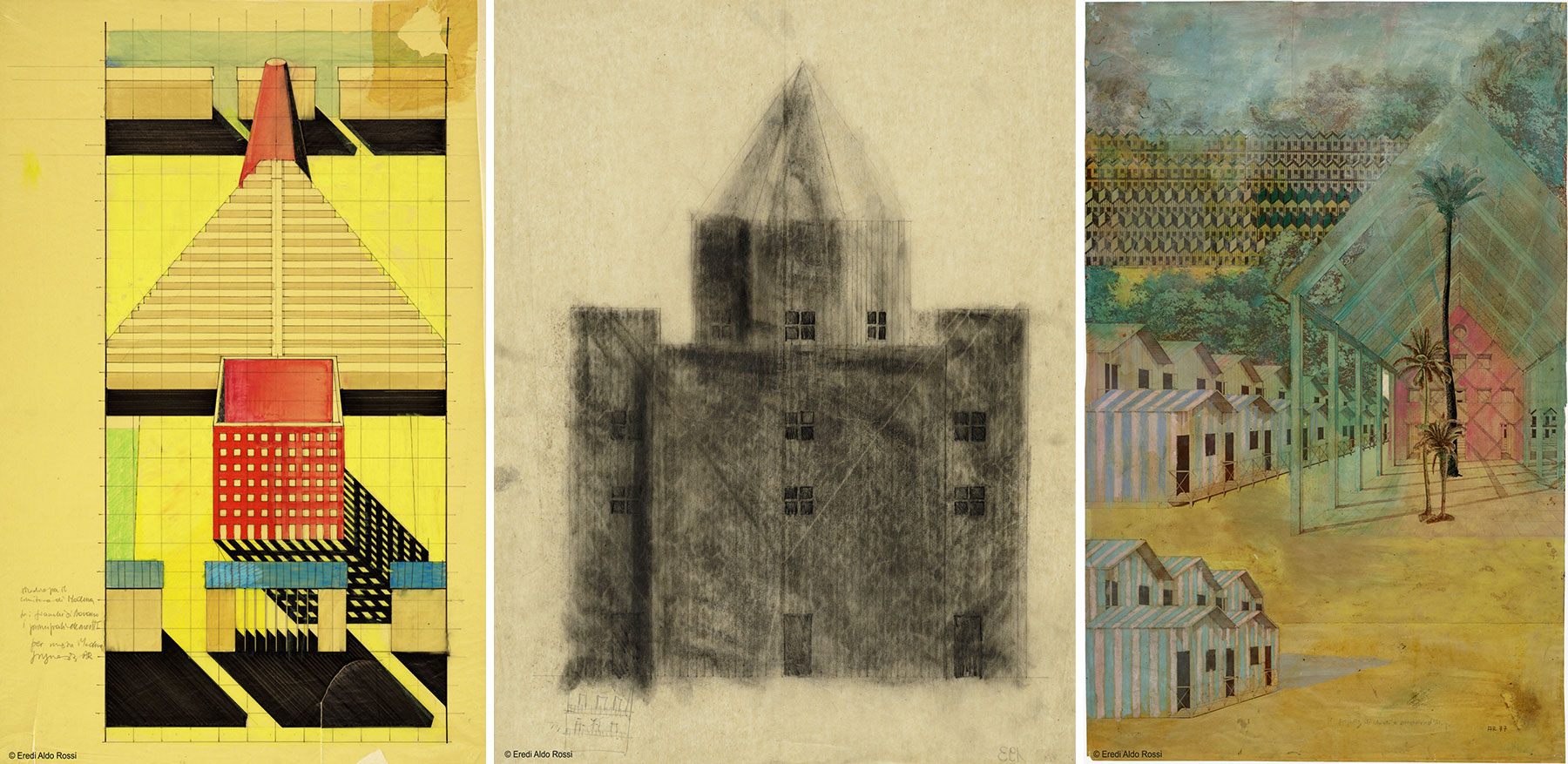
Center: Aldo Rossi, Teatro del Mondo for the 1st International Architecture Exhibition of the Venice Biennale (1979-80), Prospectus, s.d. pencil on tissue paper, MAXXI Architecture Collection. Aldo Rossi Archive, © Eredi Aldo Rossi
Right: Aldo Rossi with G. Braghieri, A. Cantafora Competition for the student house, Chieti, 1977, Graphic elaboration (Perspective section and perspectives), coffee, wax crayons, collage, heliographic copy on paper MAXXI Architecture Collection. Aldo Rossi Archive © Eredi Aldo Rossi
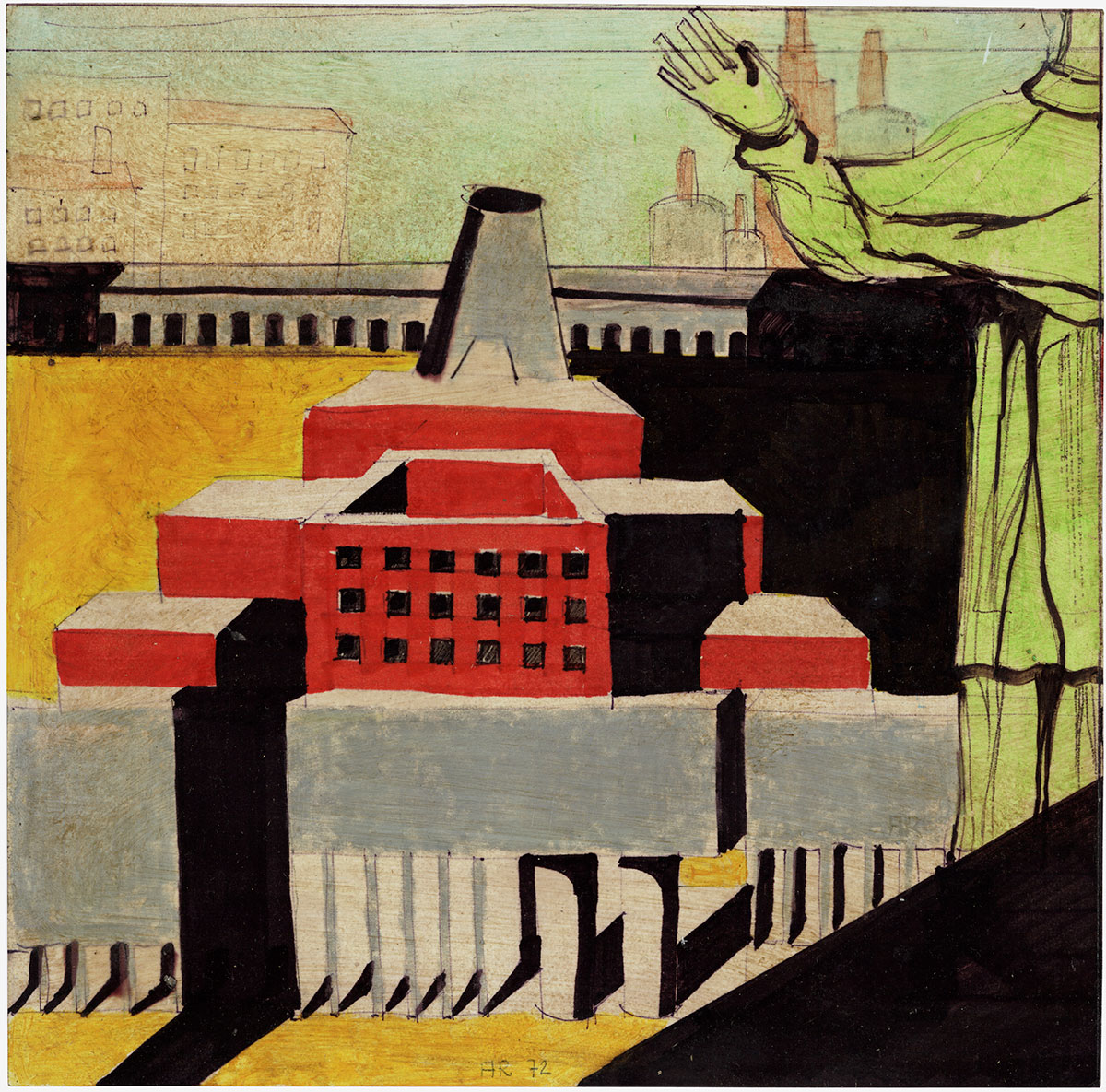
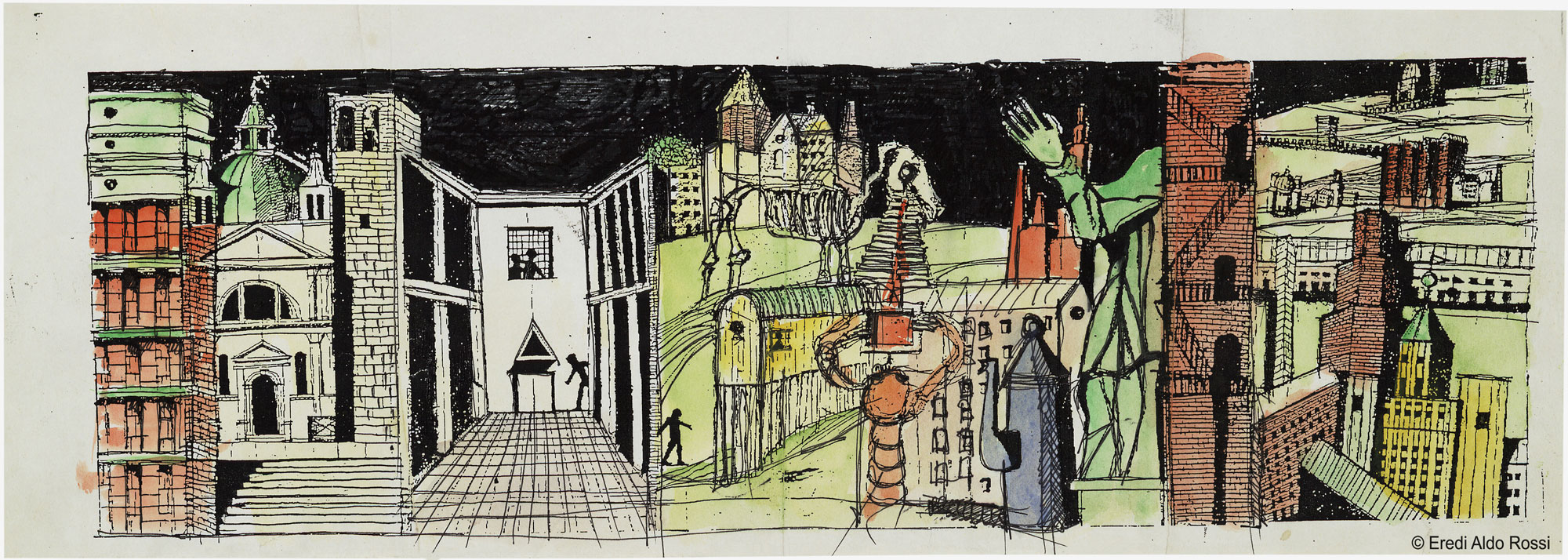
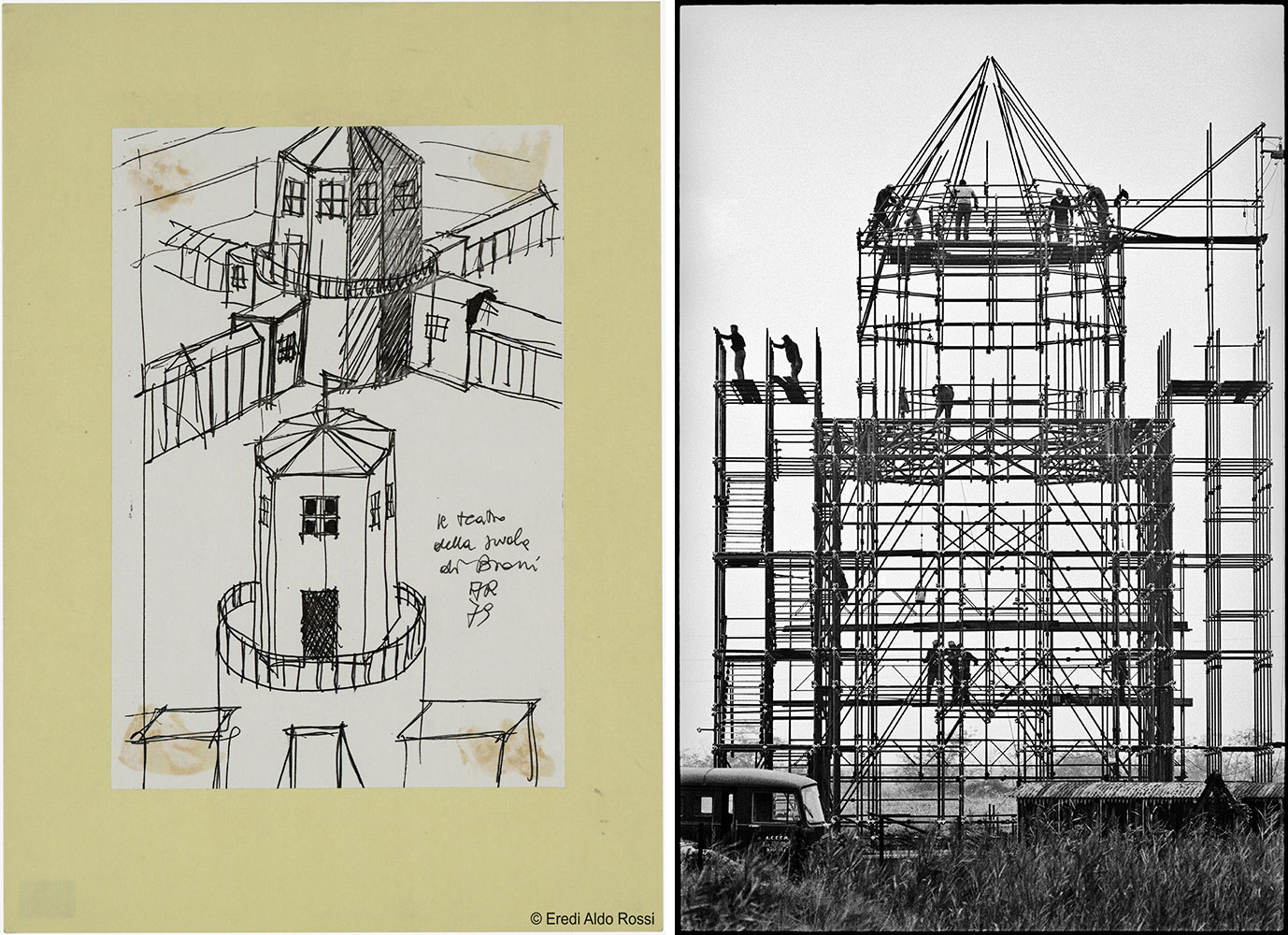
Right: Photographic reportage of the construction and travel of the Teatro del Mondo from Venice to Dubrovnik, 1979-1980, Photographs by Antonio Martinelli, © Antonio Martinelli
